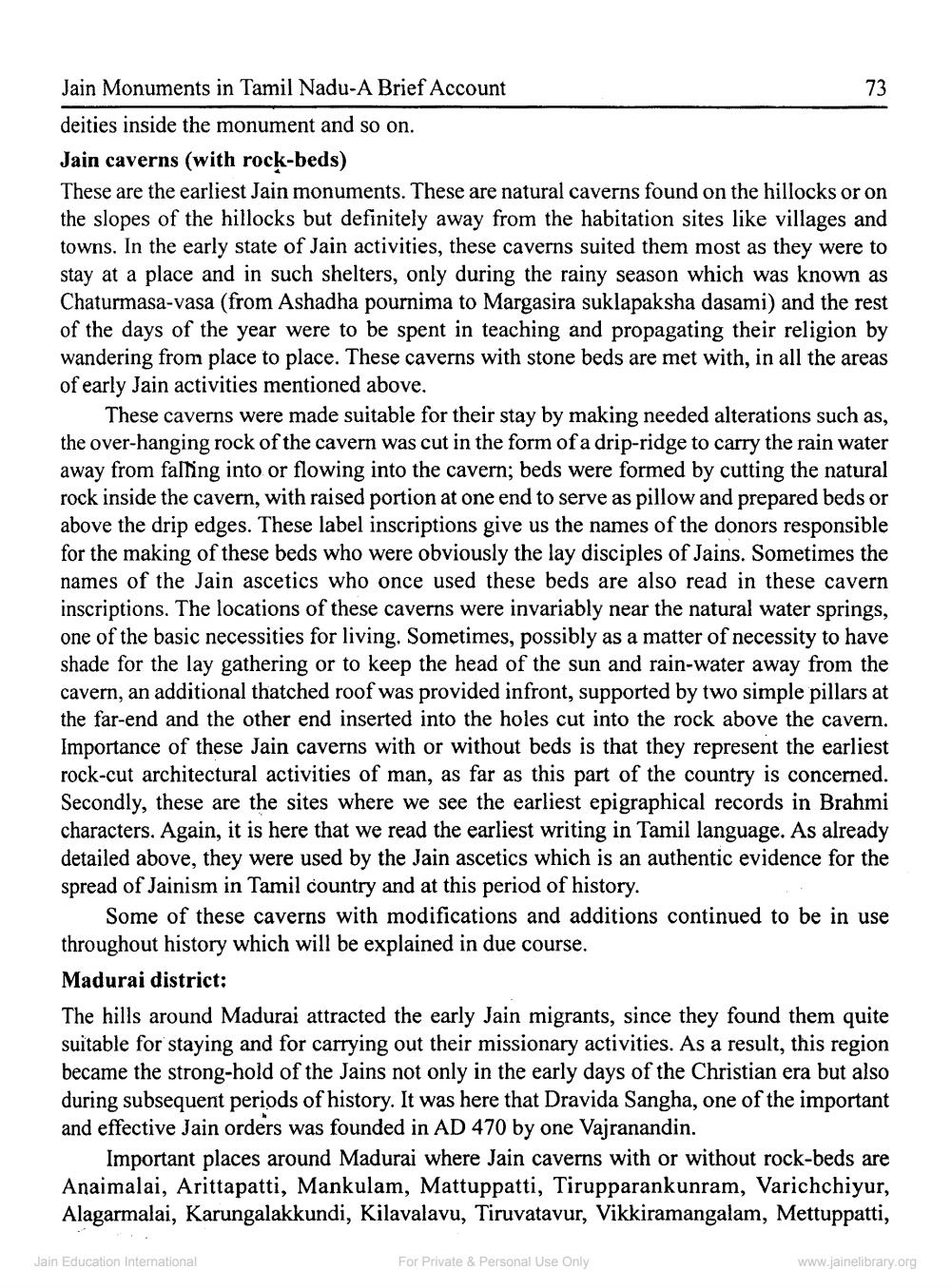________________
Jain Monuments in Tamil Nadu-A Brief Account
deities inside the monument and so on. Jain caverns (with rock-beds) These are the earliest Jain monuments. These are natural caverns found on the hillocks or on the slopes of the hillocks but definitely away from the habitation sites like villages and towns. In the early state of Jain activities, these caverns suited them most as they were to stay at a place and in such shelters, only during the rainy season which was known as Chaturmasa-vasa (from Ashadha Pournima to Margasira suklapaksha dasami) and the rest of the days of the year were to be spent in teaching and propagating their religion by wandering from place to place. These caverns with stone beds are met with, in all the areas of early Jain activities mentioned above
These caverns were made suitable for their stay by making needed alterations such as, the over-hanging rock of the cavern was cut in the form of a drip-ridge to carry the rain water away from faling into or flowing into the cavern; beds were formed by cutting the natural rock inside the cavern, with raised portion at one end to serve as pillow and prepared beds or above the drip edges. These label inscriptions give us the names of the donors responsible for the making of these beds who were obviously the lay disciples of Jains. Sometimes the names of the Jain ascetics who once used these beds are also read in these cavern inscriptions. The locations of these caverns were invariably near the natural water springs, one of the basic necessities for living. Sometimes, possibly as a matter of necessity to have shade for the lay gathering or to keep the head of the sun and rain-water away from the cavern, an additional thatched roof was provided infront, supported by two simple pillars at the far-end and the other end inserted into the holes cut into the rock above the cavern. Importance of these Jain caverns with or without beds is that they represent the earliest rock-cut architectural activities of man, as far as this part of the country is concerned. Secondly, these are the sites where we see the earliest epigraphical records in Brahmi characters. Again, it is here that we read the earliest writing in Tamil language. As already detailed above, they were used by the Jain ascetics which is an authentic evidence for the spread of Jainism in Tamil country and at this period of history.
Some of these caverns with modifications and additions continued to be in use throughout history which will be explained in due course. Madurai district: The hills around Madurai attracted the early Jain migrants, since they found them quite suitable for staying and for carrying out their missionary activities. As a result, this region became the strong-hold of the Jains not only in the early days of the Christian era but during subsequent periods of history. It was here that Dravida Sangha, one of the important and effective Jain orders was founded in AD 470 by one Vajranandin.
Important places around Madurai where Jain caverns with or without rock-beds are Anaimalai, Arittapatti, Mankulam, Mattuppatti, Tirupparankunram, Varichchiyur, Alagarmalai, Karungalakkundi, Kilavalavu, Tiruvatavur, Vikkiramangalam, Mettuppatti,
Jain Education International
For Private & Personal Use Only
www.jainelibrary.org




